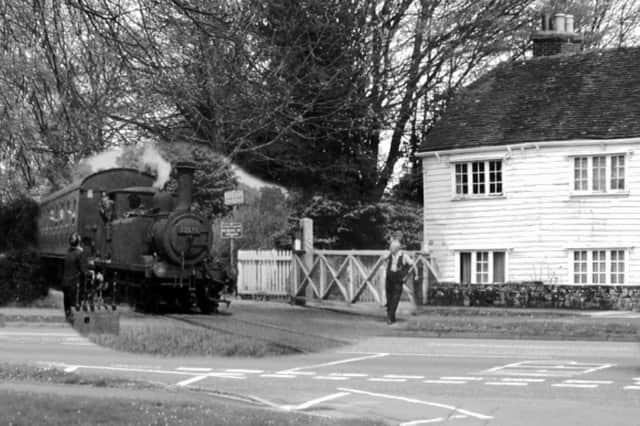Langstone cottages destroyed by fire were home to crossing keepers '“Â Nostalgia


Many thought they were built for railway employees but not so, they had already existed for a century or more before the railway was even planned.Â
The pair of two-floor cottages were Grade II listed and described as being late 18th century. They had weather-boarded walls and a tiled roof.There was a side entrance with a small porch on the south side. There was a fresh water well in the back garden.
Advertisement
Hide AdAdvertisement
Hide AdIn the top part of the photograph crossing keepers Albert Grout and Jack Dalton watch as the Hayling Billy passes through. In the foreground the new, much wider, road has been superimposed on the older photo. The picture comes from Ralph Cousins's booklet Branch Line to Hayling Island available from him on (023) 9248 4024.
In the new year I will be interviewing a woman whose parents lived in one of the houses for 50Â years.
'¢ You will be aware of the horrific executions that took place at Tyburn in London. But I've discovered that a hanging, drawing and quartering took place on Southsea Common.Â
Scotsman David Tyrie was sentenced to death at Winchester for '˜traitorously sending intelligence of our naval affairs to France during time of war'.
Advertisement
Hide AdAdvertisement
Hide AdMr Justice Heath passed sentence '˜that he be hanged by the neck, that he should be cut down and his bowels taken out and burnt before his face and that his head be taken off and his body cut into four quarters to be placed at his Majesty's disposal'. The sentence was carried out the common on August 14, 1782.
A report of the day states: '˜A great concourse of spectators assembled and many acted with bestial ferocity. After the beheading, blood spattered over the spectators causing a rush by the crowd. A scene of ruffianism and coarse brutality ensued rarely to be witnessed.
'˜Men and women fought with each other to become possessors of portions of the traitor's body. His fingers were cut off to be used as tobacco stoppers and handkerchiefs steeped in blood with the savage scene ending in a general fight.
'˜The disgusting scene ended with the military endeavouring to restore order. The head of Tyrie was secured by Buck Adams, the keeper of the Gosport bridewell and exhibited for many years.'
Advertisement
Hide AdAdvertisement
Hide Ad'¢Â My mention of police telephone posts brought another memory from Doug Willis. He says: '˜There was a police telephone post on the corner of Elm Grove/Grove Road South outside the then Knight and Lee menswear shop.'
'˜From our home above 97, Elm Grove we would see the orange light flashing and a beat bobby answering the call. He unlocked a small door and picked up a phone. On one of the other sides the small door could be pulled open and members of the public could speak into a grill in emergencies.'
Doug's memories of the area continue with recollections of a firm called Radio Relay which had a shop opposite Telephone House where Rosie's Wine Bar is now.
As a lad he had a friend from Pelham Road he thinks was called Michael Gould who had an older sister. Doug says: '˜As none of us had TVs he used to take three or four us into the shop and his sister would sit us on the floor so as we could watch Children's Hour. Unfortunately, word spread and more came prompting the manager to put names into a hat and draw lots as to which day people could watch. My brother and I were lucky as we got The Cisco Kid and Pancho, a favourite of the time.Â
'˜Of course eventually more and more people became TV owners and the crowds drifted away. Kids today would not believe some of these stories.'